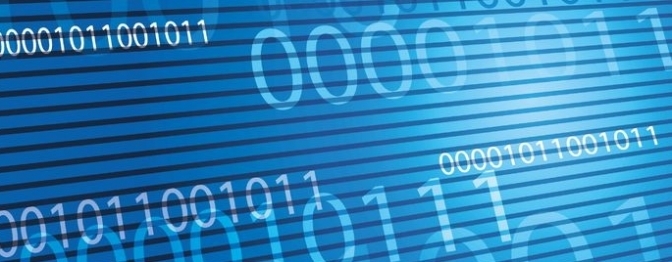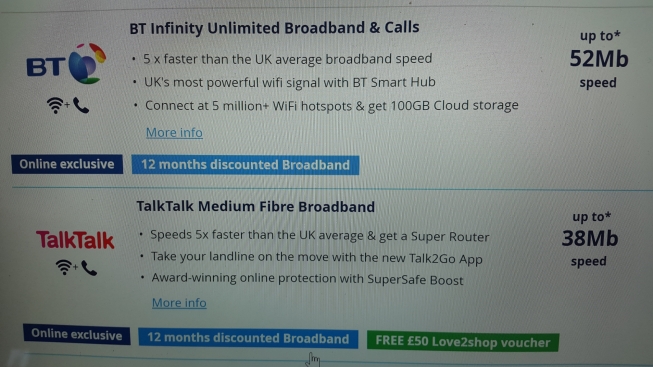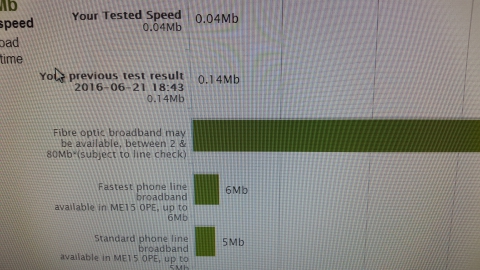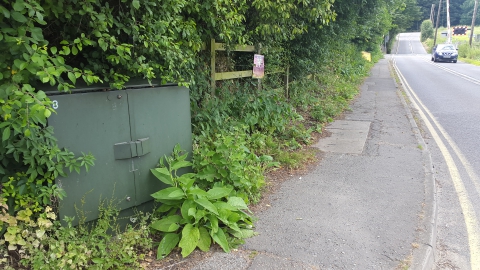
Bits and bytes
All the information that you download from the internet arrives as a stream of bits i.e. zeroes and ones. That's all. So how does it mean anything? How does it become photos or emails or computer programs?
When we humans read and write, we make words out of letters. In the English alphabet, there are 26 letters. Everything we read and write is a sequence of those 26 letters plus punctuation. And when we work with numbers, we work with ten digits, 0 to 9. Using sequences of those digits, we can write down and work with bigger numbers like 65,131,944 (the estimated population of the UK right now!)
Computers use just two numbers: 0 and 1, and no letters. Two = binary. To a computer, all data whether it be a number or a document or a picture or even a computer program is just a sequence of zeroes and ones. An individual 0 or a 1 is called a bit. So 0101 for example is a string of four bits.
A string of 8 bits is called a byte. How come 8 bits are so important that they got their own name (and a confusing one at that!)? Because each byte corresponds to an alphabetical letter...
How many different flavours of byte are there? In other words, how many different sequences of eight bits? The answer is 2 x 2 x 2 x 2 x 2 x 2 x 2 x 2 = 256. Which is enough to give each letter of the alphabet (including all the foreign (!) ones, the numerals and the punctuation marks) its own sequence of 8 bits to represent it.
There's a standard for mapping bytes into alphabetical letters which goes back to the dawn of modern IT. It's called ASCII (American Standard Code for Information Interchange). So for example the sentence “the quick brown fox jumped over the lazy dog” is represented in a computer as a sequence of 44 bytes or 8 x 44 = 352 bits (yes, the ‘space’ is just another character).
Note. A capital B represents a byte and a lower case b represents a bit. A thousand bytes (don’t write in, pedants, I know, I know) is 1KB and a thousand bits is 1 Kb, and a million bytes are 1 Mb and a million bytes are 1MB.
Measuring transmission speed
Transmission speed is measured in bits per second, whereas file size is measured in bytes. Good to remember it, because otherwise you will be disappointed by your new broadband. You may be anyway, if you believe the comparison websites:

Suppose you want to download a picture which is 10MB and your download speed is 10Mb. Will it take one second? No! 10MB (megabytes) is 80Mb (megabits)…so it will take 8 seconds. Unless your supplier exaggerated the speed you can expect.
It is a surprising fact that the new and tougher (!) guidelines introduced by the Advertising Standards Authority and the Committee of Advertising Practice (CAP) in 2012 require advertised ‘up to’ speeds to be consistently available to at least 10% of the users of that service!!!
Imagine if supermarkets were only required to put an actual kilo of sugar in 10% of the bags labelled “1 Kg”!

This is a real picture taken last week !
PS. My broadband supplier says I'm fine.
To be fair to the industry, Version 3 of Ofcom’s Voluntary Code of Practice (June 2015) does require internet providers to tell you what most subscribers to their service actually receive, prior to your actually signing the contract.
The confusion between bits per second and bytes per second, and the low standard of veracity set by the regulators ensures that most of us are going to be disappointed with our broadband.
How the internet gets to you
So, how do the bits and bytes actually arrive or depart from your home?
For us out in the wilds of Kent, the answer is DOWN YOUR PHONE LINE. Strings of zeroes and ones are sent down your phone line using a coding protocol called ADSL or Asymmetric Digital Subscriber Line (it’s ‘asymmetric’ because it sacrifices upload speed to send data faster down to your home than it retrieves data out of your home, which is smart because that’s what you want most of the time.)
It’s not the only answer. For the past decade, BT Openreach has been rolling out FTTC or Fibre to the Cabinet technology. The cabinets in this case are new, green cabinets which are connected to the exchange by high speed fibre cables. The ‘last mile’ to your home is still by that old, copper wire but using a new encoding protocol called VDSL or Very High Speed Digital Subscriber Line. Using this protocol, speeds of up to 76Mb/second are theoretically possible, but get rapidly slower as you get away from the cabinet, dropping to 20Mb/sec when you are a mile away.
FTTC comes to Teston Bridge
Good news is on the horizon! Kent Country Council has a program to upgrade cabinets in the area to fibre, thus accelerating the FTTC delivery in the area. Essentially, KCC are funding Openreach to accelerate fibre delivery to selected cabinets in Kent.
According to the very helpful broadband team at KCC, detailed planning is underway to upgrade Cabinet 8 outside the Teston Country Park before the end of the year. Which means that we will be able to buy fibre solutions from anyone who uses BT OpenReach’s infrastructure (BT Infinity, TalkTalk fibre, EE, pretty much everyone except Virgin Media). But the last mile from Cabinet 8 is still over that phone line! Delivery speeds will drop off rapidly the further away from Cabinet 8 you are. At the top of the village, perhaps 12Mb/sec. Better, but not a revolution.

You may be surprised by this – this would not be “superfast” broadband (defined as greater than 24Mb/sec).
Two of the technical challenges of rolling out BT’s FTTC strategy have gradually become apparent over the past 4 years: (1) speeds over VDSL drop very rapidly over distance from the cabinet (much more rapidly than ADSL), and (2) there are issues with “crosstalk” or interference between users which can rapidly degrade the new service as more and more people sign up for it.
Your other options
True FTTP (fibre all the way into your home, avoiding the phone line) is not going to be available any time soon this side of the river. Virgin Media’s high speed offering is available in Maidstone but not here.
For people who want small amounts of data but at high speed – i.e. office users, not game players or households who watch a lot of TV over the internet – you could look at 4G mobile broadband services. Vodafone, for example, are offering wireless dongles at the moment which provide 20GB of data monthly for a monthly cost of £20.
Alternatively, you can try Vfast (www.vfast.co.uk/) or Callflow Solutions Ltd (www.callflow.co.uk/). Both of these company avoid the copper wire entirely – they connect your home via radio to one of their antennae. The issue here is that your home has to be in line of sight from their masts. There is a mast at the top of Charlton Lane, and another at the top of Yalding Hill. Neither vendor was able to connect to any of their masts from the roof of Smiths Hall (June 2016) so this is not a silver bullet.
And of course, you can go with satellite broadband through companies like europasat (www.europasat.com). We don’t know anyone in West Farleigh who has tried this but it is certainly available. The traditional issue with satellite is latency i.e. the time it takes for a packet to get from the public internet to you or back. This latency means that while upload and download speeds may be comparable with FTTC, real time games and voice phone calls will suffer from delays in the other party responding.
Let’s hope that Cabinet 8 brings us some relief.







Make A Comment
Comments (0)